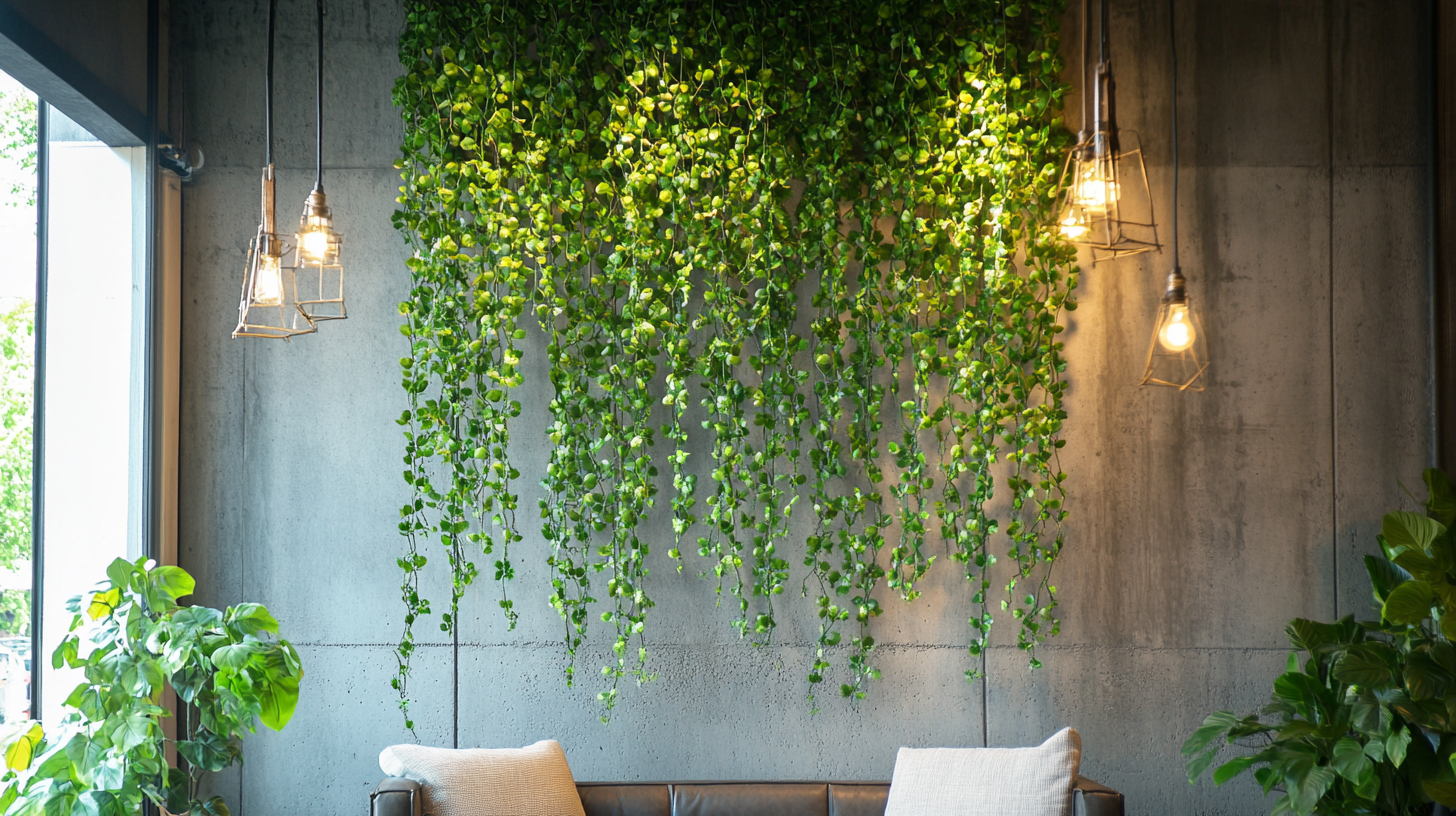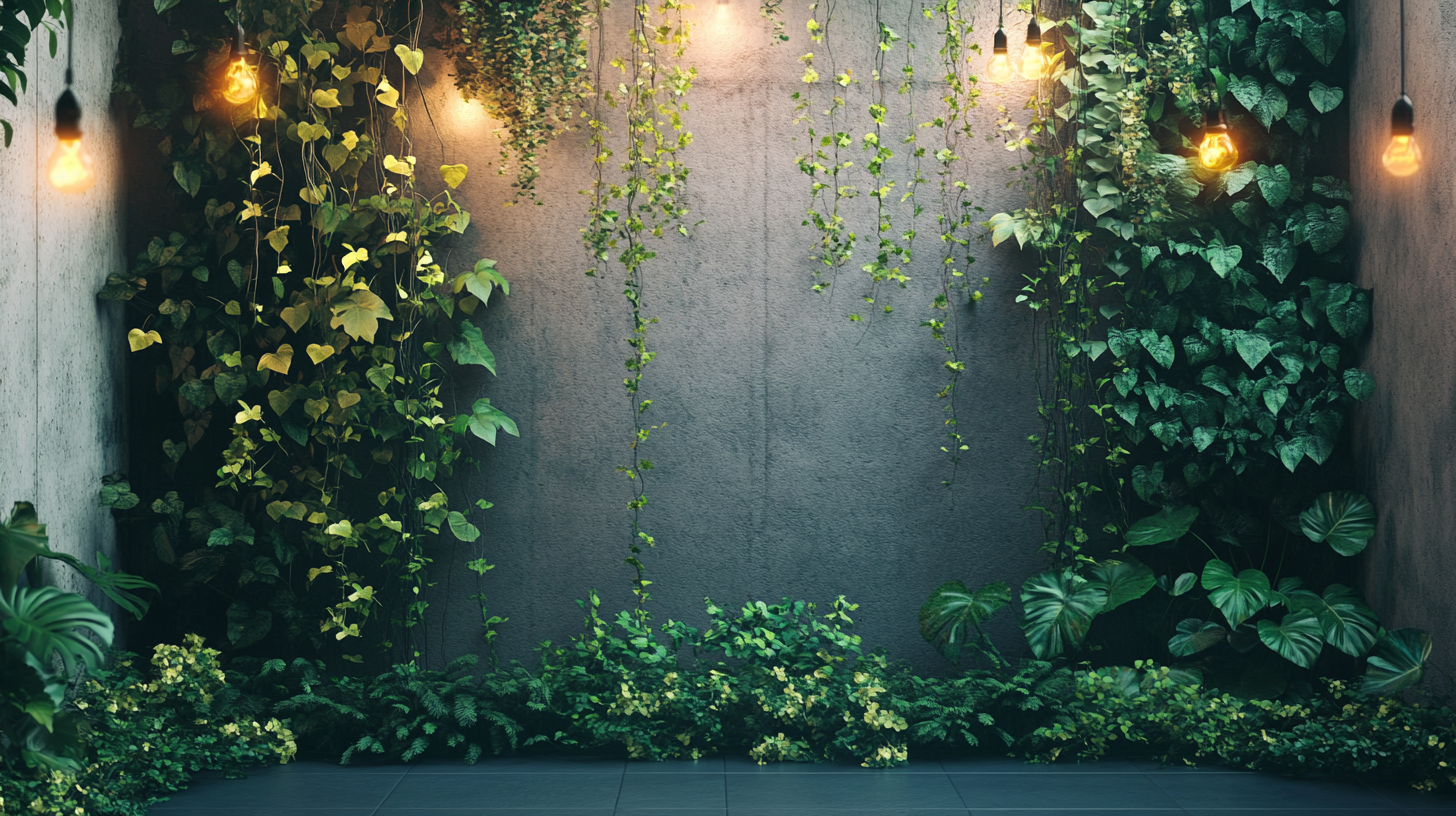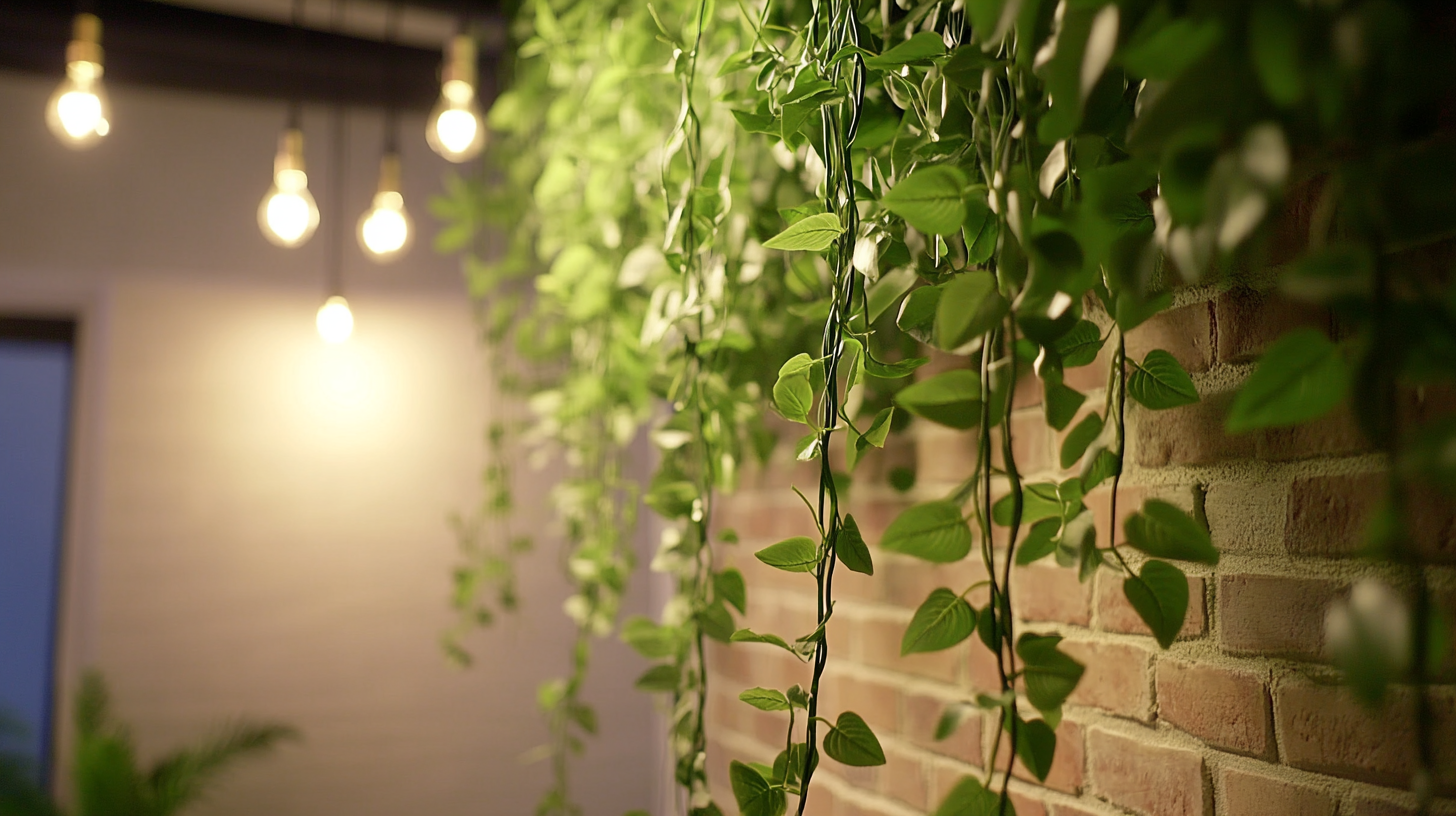
As the demand for innovative and sustainable design solutions continues to rise, the use of decorative elements such as "Fake Vines Spotlight" has gained significant traction in the interior design industry. According to a recent report by Market Research Future, the global artificial plants market is estimated to surpass $4 billion by 2025, driven by a growing preference for low-maintenance greenery that enhances aesthetics without the burden of upkeep. This trend reflects a broader movement towards biophilic design, where natural elements are integrated into artificial environments to foster emotional well-being and create inviting spaces. With advancements in manufacturing techniques, fake vines now boast realistic textures and vibrant colors, allowing designers to creatively incorporate them into various settings—from residential homes to commercial spaces—while benefiting from cost-effectiveness and versatility. In this blog, we will explore innovative ways to integrate fake vines into your decor, spotlighting the latest design trends that will transform your surroundings into lush, lively havens.

In recent years, the interior design industry has witnessed a significant shift towards incorporating greenery into spaces, with an increasing trend toward using artificial plants. According to a report by the National Gardening Association, 78% of respondents express a desire to have plants in their homes, yet many feel they lack the time or expertise to care for live flora. This is where fake vines emerge as an excellent solution, providing the aesthetic benefits of greenery without the maintenance hassle.
Fake vines not only enhance the visual appeal of a room but also contribute to a more relaxed atmosphere. A study published in the Journal of Environmental Psychology highlights that exposure to greenery can reduce stress levels and improve overall well-being. Utilizing fake vines creatively—such as draping them over shelves, adorning walls, or even creating a faux trellis—can mimic the calming effects of a living garden while ensuring the longevity and flexibility of design. Moreover, a report from Allied Market Research suggests that the artificial plant market is anticipated to reach $2.6 billion by 2025, showcasing a growing acceptance of synthetic greenery in interior spaces.
Furthermore, fake vines are a sustainable choice for modern design. With concerns about deforestation and sustainable sourcing, opting for artificial plants means contributing to a reduction in demand for live plants that require extensive water and resources. As consumers become more conscientious, integrating eco-friendly elements into design is paramount; thus, fake vines offer an innovative and stylish way to achieve this goal without sacrificing aesthetic quality.
Incorporating fake vines into your home decor can transform an ordinary space into a vibrant oasis. These versatile decorations add a touch of nature without the maintenance of live plants. One creative way to use fake vines is by draping them along shelves or bookshelves. This not only softens the hard edges of furniture but also creates a flowing, organic look that evokes the outdoors. Choose varying lengths and styles to create a cascading effect that draws the eye and invites conversation.
Another innovative approach is to utilize fake vines as wall art. Instead of traditional frames, consider weaving artificial vines into geometric shapes or even around a mirror. This can create a stunning focal point and bring life to bare walls. Pair your vines with fairy lights for an enchanting glow that adds warmth to your evenings. Additionally, you can incorporate them into centerpiece arrangements or wreaths, providing an effortless way to celebrate each season with a hint of greenery. With fake vines, the possibilities are endless, allowing for personalized and dynamic decor that enhances any room.
| Design Trend | Description | Creative Use | Impact |
|---|---|---|---|
| Botanical Wall Art | Incorporating fake vines into framed art pieces to create a 3D effect. | Hang framed pieces surrounded by vines on a focal wall. | Adds visual depth and uniqueness to decor. |
| Vine-Decorated Shelves | Draping artificial vines on shelves for a lush aesthetic. | Style with books, pots, and decorative items interspersed with vines. | Creates a lively and inviting atmosphere. |
| Ceiling Decor | Hanging fake vines from the ceiling to create visually interesting decor. | Suspend vines above dining areas or lounges. | Draws the eye upward, enhancing the sense of space. |
| Table Centerpieces | Using fake vines as part of table centerpieces for events or everyday dining. | Intertwine vines with flowers, candles, or decorative bowls. | Elevates dining experiences with a touch of nature. |
| Window Treatments | Incorporating fake vines into curtain designs or window ledges. | Drape vines around curtain rods or place them on window sills. | Softens the look and brightens up natural light areas. |
When choosing the right fake vines to match your style, it’s essential to consider the aesthetics they bring to your indoor spaces. With the rise of lifelike artificial plants, many homeowners are now blending these elegant pieces into their decor to create a vibrant atmosphere without the maintenance that comes with live plants. According to industry reports, the market for artificial plants is projected to grow significantly, indicating an increasing popularity of alternatives that enhance home interiors effortlessly.
When selecting fake vines, focus on realism and quality. Look for options that feature detailed leaves and varied textures to mimic natural vines. Colors should complement your existing decor—consider pairing dark green vines with lighter surroundings to create a striking contrast. As highlighted in recent home-staging tips, well-chosen artificial plants can easily elevate a room’s ambiance, making it feel lush and inviting. Additionally, they can be strategically placed around focal points in your home to draw the eye and create a cohesive design trend that resonates with your personal style.
Integrating fake vines into your home decor can transform spaces with minimal effort and cost. According to a recent report by the Home Decor Institute, the use of artificial plants has increased by 58% over the last five years, indicating a significant shift towards low-maintenance greenery that adds life to interiors. A popular installation idea for fake vines is to cascade them along bookcases or shelving units. This not only draws the eye but also creates a lush, inviting atmosphere in rooms like living areas or home offices.
In kitchens, wrapping fake vines around window frames or light fixtures can soften the industrial feel of stainless steel appliances. The National Gardening Association notes that 72% of homeowners are interested in incorporating biophilic design elements, which emphasize the relationship between nature and indoor environments. By using faux vines, you can seamlessly bring that natural aesthetic into your culinary space without worrying about sunlight or watering needs. This versatile decor choice can also extend to bedrooms, where draping artificial vines over headboards or across the walls can provide a serene and cozy vibe, perfect for relaxation.

In the ever-evolving world of interior design, the trend of incorporating artificial foliage is gaining prominence, especially as we approach 2025. Designers are increasingly favoring innovative materials and creative ways to implement fake vines that contribute to a modern aesthetic. This shift away from traditional plants allows for flexibility in design, enabling homeowners to explore lush greenery without the maintenance demands of real plants. The use of artificial vines not only adds a touch of nature but also harmonizes beautifully with the trending moody paint colors and warm wood tones that are defining contemporary spaces.
The current design landscape is moving towards an emphasis on texture and layered visuals. Artificial foliage offers the perfect solution; it adds depth and life to interiors without the constraints usually imposed by plant care. As we say goodbye to trends like all-white interiors, which many designers hope will fade, the introduction of greenery—especially through the clever use of fake vines—provides a refreshing contrast. Coupled with bold colors and unique wall decor strategies, these elements work together to create a vibrant, welcoming environment that reflects the modern homeowner's flair for creativity and innovation.

